There is a lot of misleading packaging out there and it can often be difficult for shoppers to accurately perceive the correct size.
A group of die-hard chip lovers at Kitchen Cabinet Kings commissioned a study to find out if some of their favorite chip brands were offering more whiff than crunch.
They gathered 14 recognized brands, ranging from healthy alternatives to more caloric options, to measure the air to chip ratio in each bag. They did so using the water displacement method, then crunched the numbers to find out which brands held the highest percentage of air.
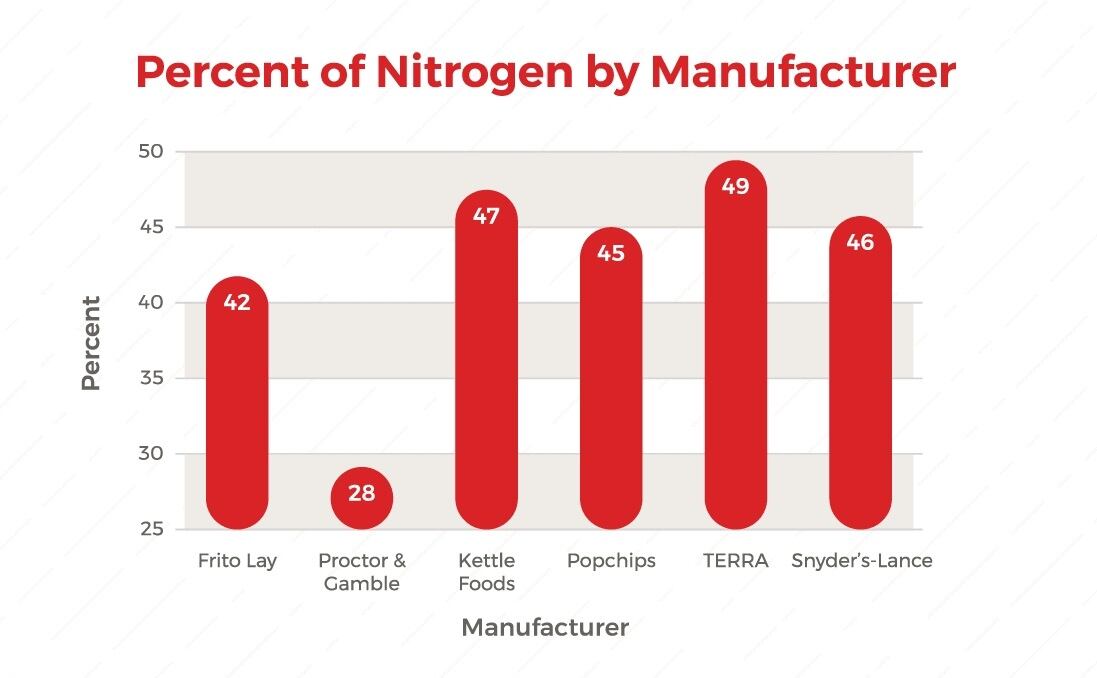
Is it really air in your bag of chips?
Actually, the answer is no. What many of us have mistaken for atmospheric air in our chip is actually nitrogen. In fact, oxygen would cause the chips to go stale and oils to become rancid.
This process is known as “slack fill”, which is even thought to make chips taste better. Slack fill isn't harmful in any way, since about 78% of the air we breathe is composed of nitrogen.
The gas is also thought to give chips a cushion. Since chips have a long way to go from creation to consumer, chip manufacturers intentionally inflate the package with nitrogen gas to protect it from damage during transit.
Still, that doesn’t excuse the sheer proportion of space that gas occupies in a bag when it’s supposed to be filled with food.
However, unless chips are sold vacuum-sealed, there’s really no way to get around a nitrogen stuffed bag. Even the brands that offer you the most bang for your buck are still going to have a bit of air.
So, what brands offer you the best value?
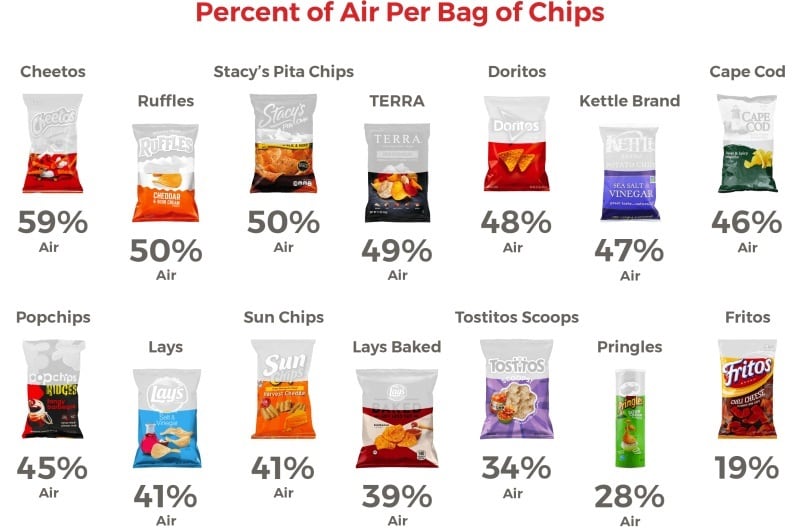
The value of healthy chip options
Healthy chips are often on the pricier end, but these snack alternatives are equal offenders when it comes to value.
However, is the high price worth the taste? The group compared the percentage of nitrogen in the bag with the average price of each brand tested.
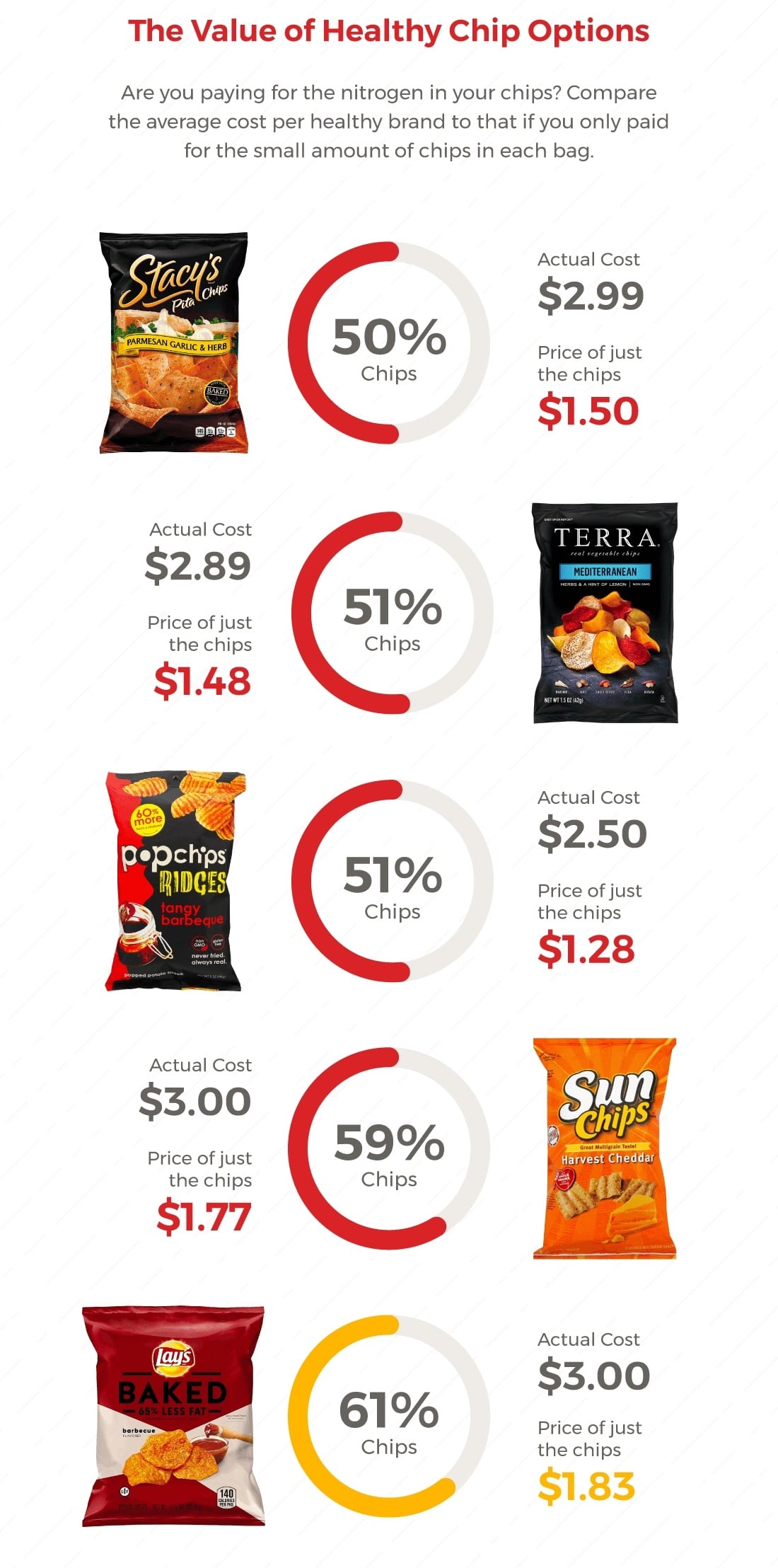
Thumbs up
Some consumers have been so disgruntled by the amount of air in their bag of chips that they have even taken their grievances to court, claiming “financial injury.” Yet, with so much air still in the bags, have any of the manufacturers done anything to rectify the situation?
In 2015, visual artist Henry Hargreaves conducted a similar experiment. His finding found air comprised about 70% of the bag, compared to the group’s finding of an average air amount of 43%.
This means a 27% increase in the amount of chips in the bag in the past two to three years.
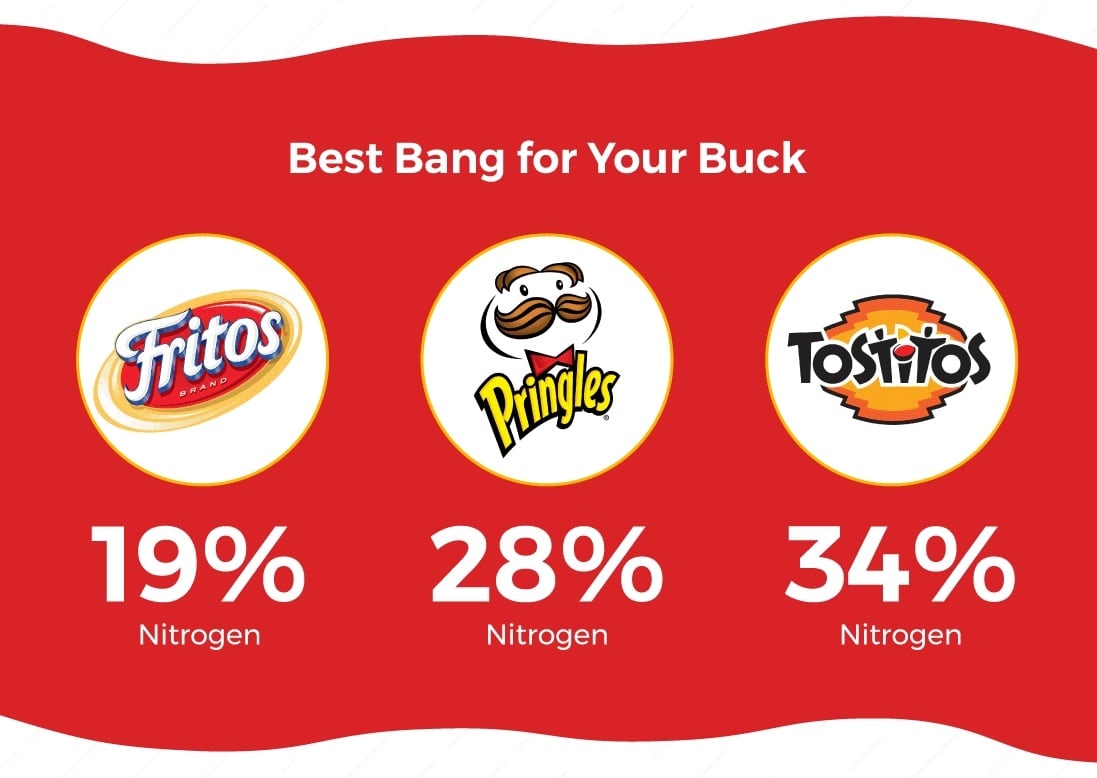
The Dorito carbon footprint
Not only does nitrogen take up a great deal of space in each bag of chips, but Hargreaves claimed the process of slack fill takes up so much space in transit that 86 out of every 100 trucks carrying Doritos don’t need to be on the road.
That’s a whopping carbon footprint.
It certainly seems that there should be a more environmentally friendly way to transport our favorite snacks. Just as the brand makers listened to consumers in the past in increasing the quantity of chips per bag, perhaps they should consider the roll slack fill plays in corporate social responsibility.
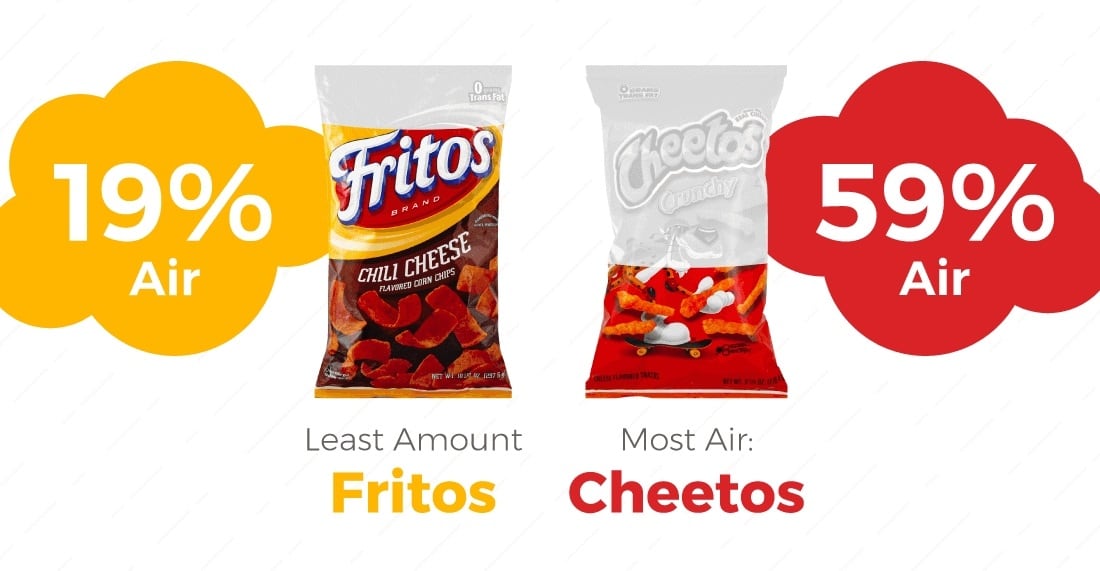
Fritos versus Cheetos
Have brands been misleading consumers?
That answer depends on the brand. A bag of Cheetos, for example, was made up of 59% of air. Conversely, a bag of Fritos only contained 19% air, which gives the consumer significantly more bang for their buck.
It turns out that chip manufacturers have been listening to their consumers. Chip bags frequently contain statements that claim to offer a greater quantity of product and, based on our findings, this appears to be the case.
Methodology
The first step was to buy the potato chips, of course. Then the group took a step back in time to middle school science class to revisit the water displacement method.
They filled up a bucket of water, submerged the bag of chips and marked the water level. They then emptied the chips into a plastic bag and vacuum sealed the contents, submerged the bag and measured the change in water level.
The difference was measured and numbers crunched to provide an easy to read percentage. The group considered the fact that no two bags of chips are exactly alike, so they tested the same size bag of chips from each brand twice.
To ensure accuracy, the starting water level was kept the same over the course of the experiment and an average was taken between the two percentages per brand.
The air explained
Sebastian Emig, director general of the European Snacks Association, notes the thinness of potato crisps (chips) and other savory snacks makes them crispy and delicious, but also very fragile.
“Manufacturers generally gas flush using inert gases (eg. nitrogen) to remove oxygen from the filled bag to preserve the freshness of the product. This also acts as a pillow to cushion the product from damage whilst being transported, stored or sold to ensure that consumers enjoy the product to its fullest,” he said.
“In terms of content of product, it is a legal obligation to include the weight in grams on the back of pack. Every consumer can clearly identify how much product is being purchased.
“Additionally, the big majority of our members follow the ESA 30 grams portion rationale; indicating the amount of recommended portions per pack,” he added.
